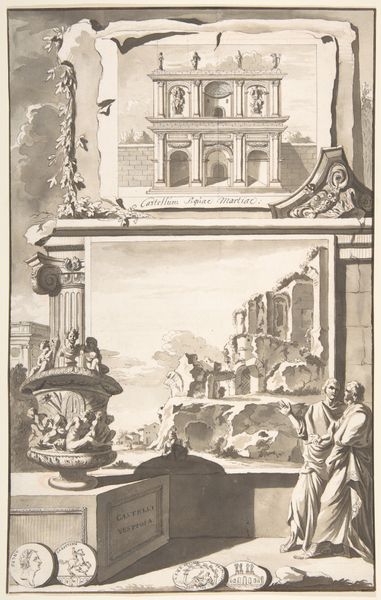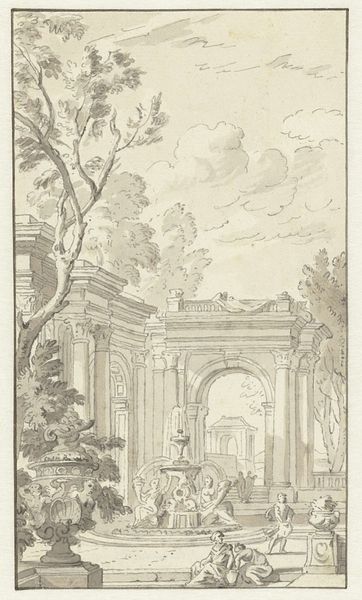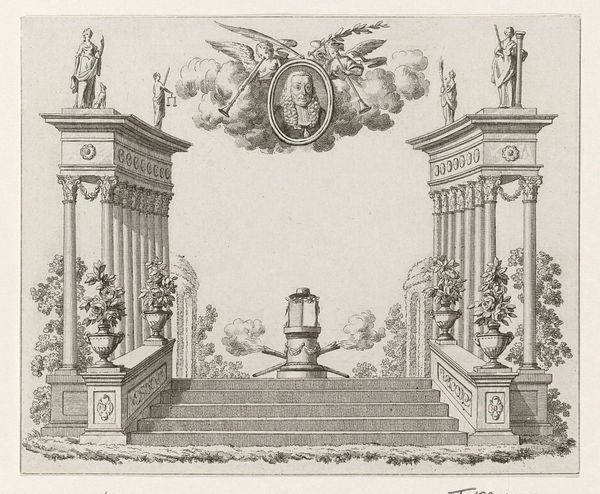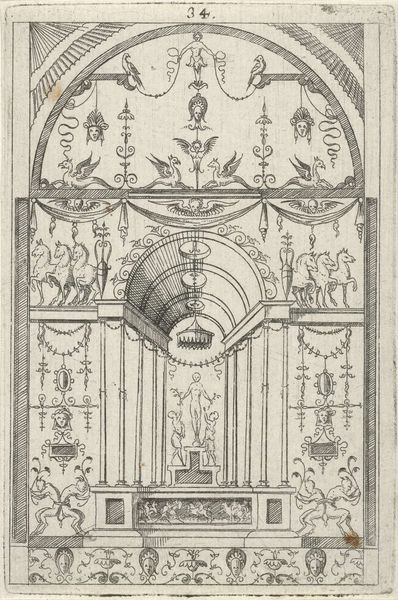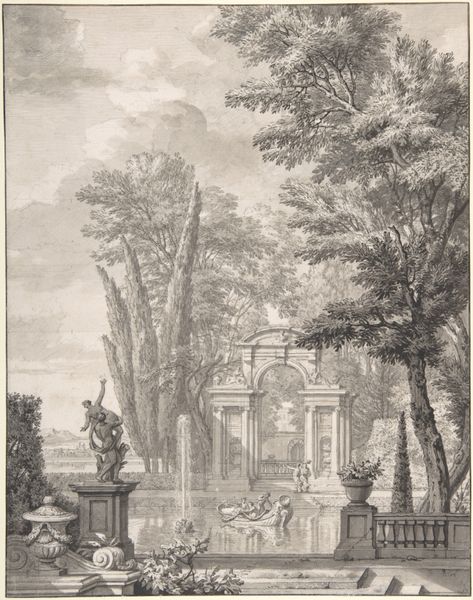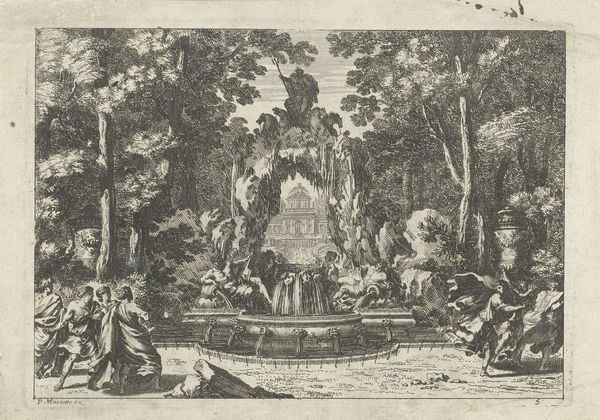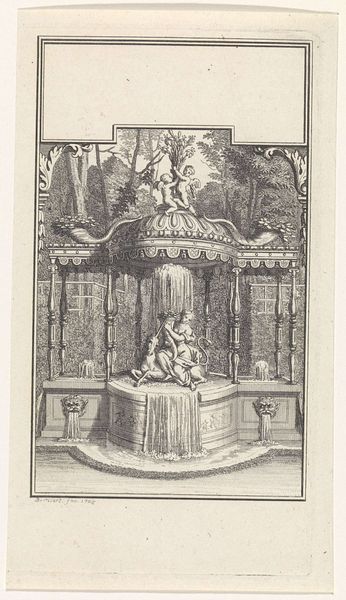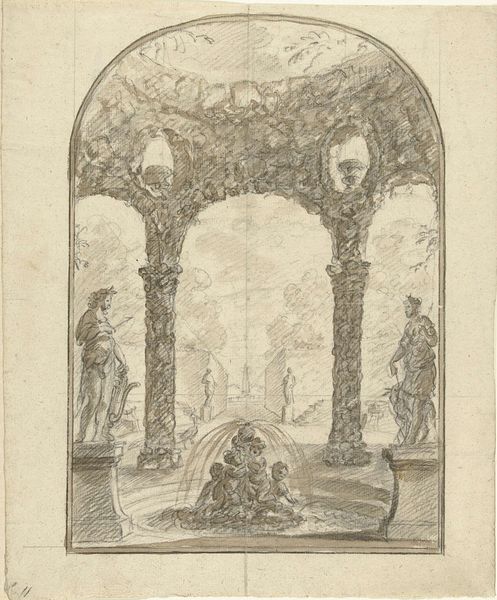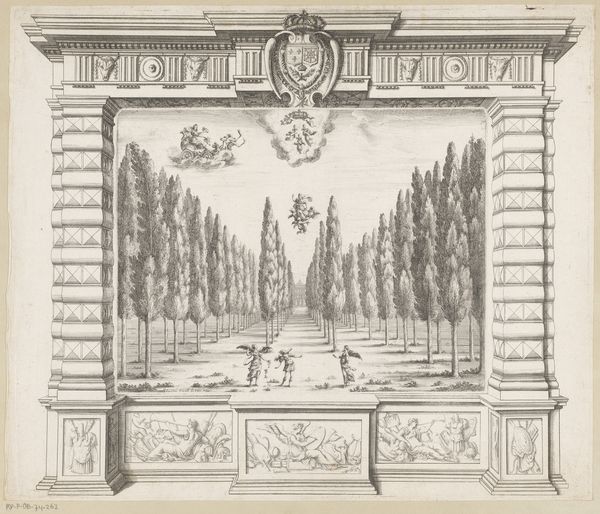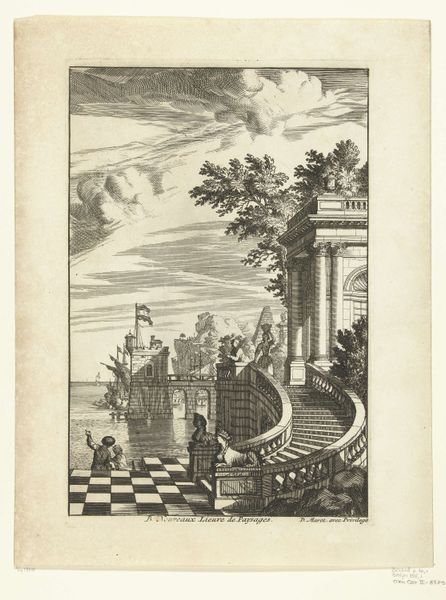
Ontwerp voor een decoratief paneel met uitzicht op een tuin tussen standbeelden door 1731 - 1732
0:00
0:00
drawing, paper, ink, architecture
#
drawing
#
baroque
#
landscape
#
paper
#
ink
#
geometric
#
cityscape
#
architecture
Dimensions: height 328 mm, width 208 mm
Copyright: Rijks Museum: Open Domain
Curator: This drawing, rendered in ink on paper by Daniël Marot the Younger, dates from around 1731 to 1732. The artwork is titled "Design for a Decorative Panel with a View of a Garden Between Statues." Editor: Oh, wow. It has such a sense of ordered tranquility. A formal garden imagined, perhaps? It feels…stage-like. Almost theatrical, with those statue 'actors' flanking the scene. Curator: Exactly! Marot was famed for his designs, particularly those melding architecture and interior decoration. This Baroque-style piece would've likely been a preliminary sketch for a grand interior. Editor: I'm curious about the statues. They appear as classical figures, holding objects perhaps symbolic of nature’s bounty or something allegorical about power, control, dominance and perhaps submission? Is the intention purely ornamental or does it intend a wider social comment, you think? Curator: Marot's vision aligns with the baroque aesthetic of showcasing elite mastery of nature and life in general, so yes, the symbolism likely intended to project wealth, learning and dominion through classicized artistic language. The fountains, statues, and geometric landscaping all work together to express those values. There's a calculated drama about it. Editor: Absolutely, and there's also this dialogue with light and shadow. The piece makes visible an attempt at spatial harmony between the architectural structure and the wild nature framed within its arches. The architecture both dominates nature and holds the view in place; like so many eras it tries to frame nature’s beauty under constructed geometric frames. Curator: Precisely, nature meticulously framed by artifice. To me it also feels like longing—an almost utopian impulse in imagining an idyllic, unattainable space, a lost Arcadia. Editor: A lost Arcadia policed by the rules of baroque power-play, that's for sure! Looking at this design makes you imagine the wealthy family commissioning this to enforce their views through nature. What legacy did the work accomplish? Who benefitted? These drawings contain dreams, but dreams crafted for specific elite circles. Curator: Very true. Ultimately, its value to us perhaps lies in this duality – as a stunning visual experience and as a mirror reflecting back societal aspirations and anxieties of its time. Editor: Indeed. It's a reminder that even beauty exists within a context of power and that by questioning that relationship, we understand the artwork more profoundly.
Comments
No comments
Be the first to comment and join the conversation on the ultimate creative platform.

